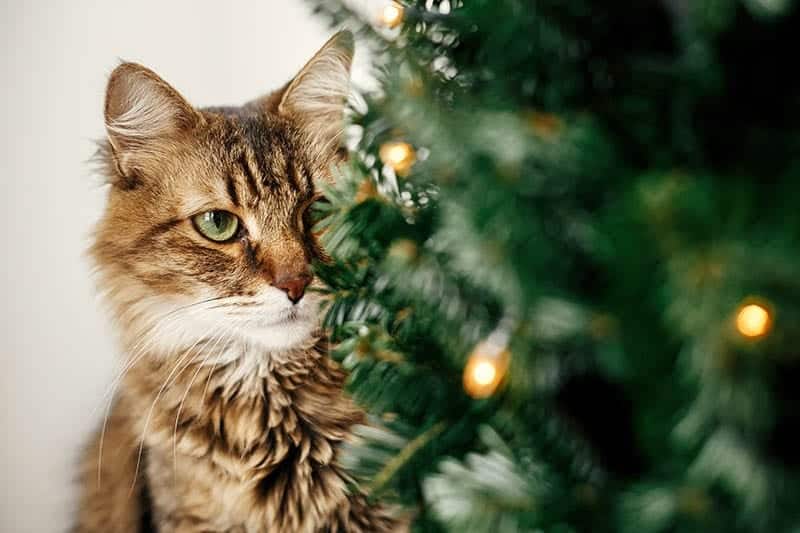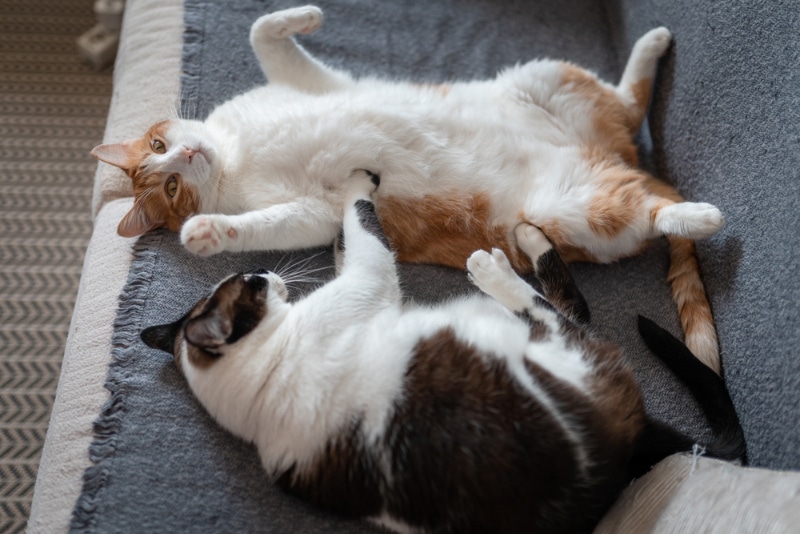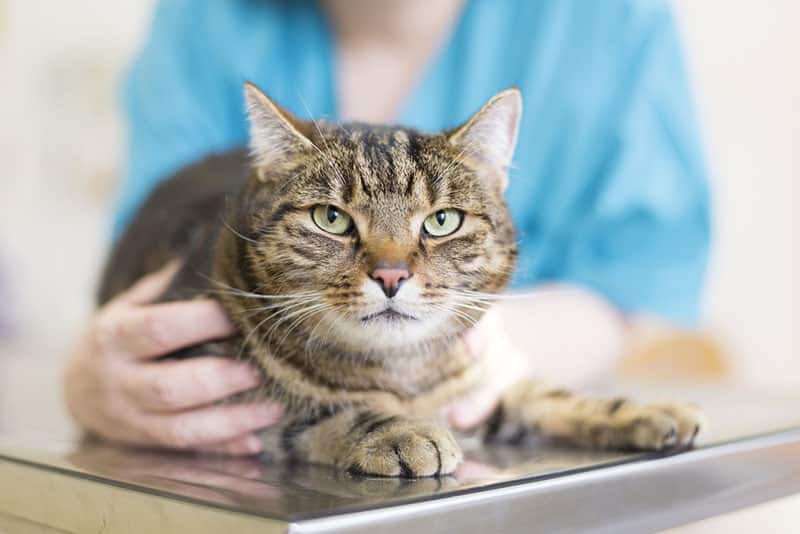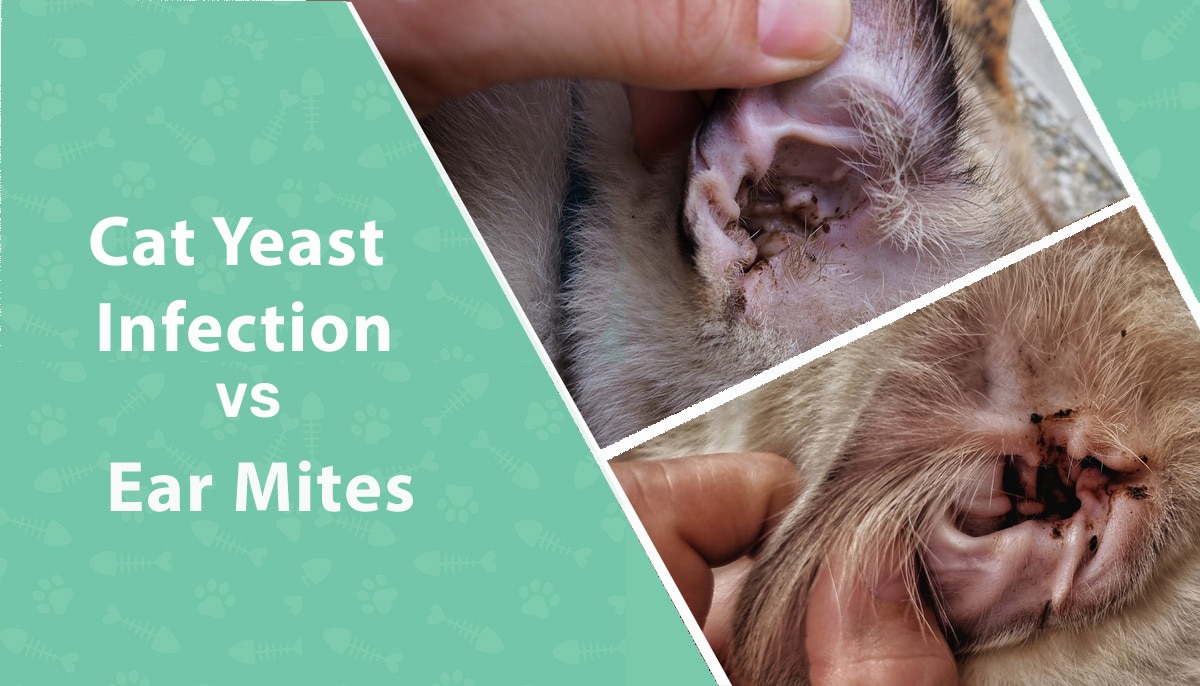Other than the baking and gift-purchasing aspects, part of gearing up for the holidays is decorating. Some decorating involves trees and plants, but when you have a cat running around, you must ensure your pet’s safety.
Unfortunately, some of the holiday plants we might have around the house are toxic to cats. Here’s a list of nine plants that must be kept away from your feline. There’s also information about plants that are safe near your cat.
The 6 Severely Toxic Holiday Plants
1. Christmas Lily
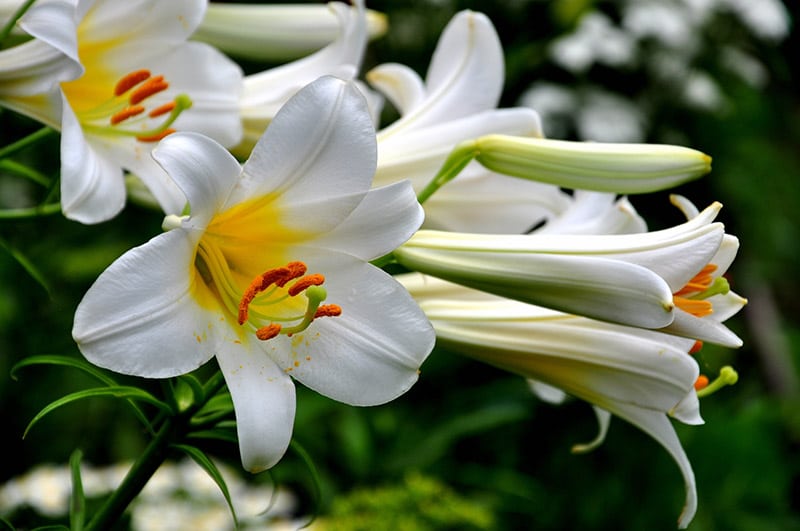
All lilies are toxic to cats to a certain degree. True lilies are the most toxic, which include Easter, Japanese show, tiger, and stargazer lilies. Christmas lilies aren’t as toxic as true lilies but are toxic nonetheless. Every part of the lily is toxic, and with the day and true lilies, kidney failure can occur within 72 hours after ingestion.
2. Holly
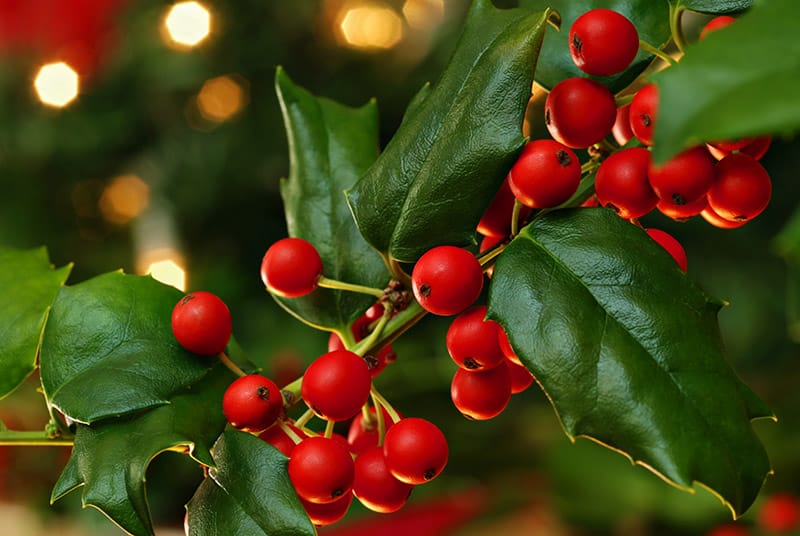
Holly contains toxic saponins. If a cat eats holly, they can suffer from severe gastrointestinal irritation, including:
- Abdominal pain
- Vomiting
- Diarrhea
The leaves are also spiny, which can injure the cat’s mouth and esophagus when ingested. If injured by the holly, your cat might shake their head excessively, smack their lips, and drool.
3. Mistletoe
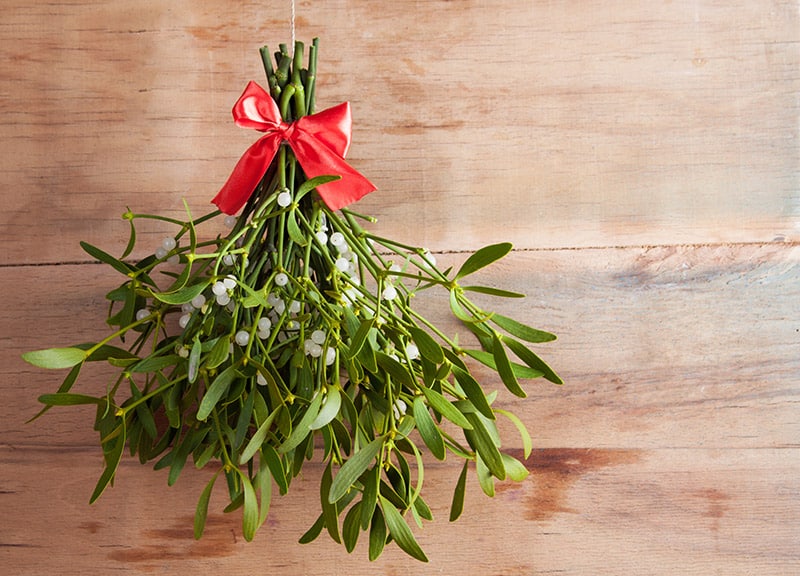
Most of us are familiar with the kissing-under-the-mistletoe tradition. Unfortunately for cats, the American (Phoradendron serotinum) and European mistletoe (Viscum album) are toxic, with the European variety being the most toxic.
- Drooling
- Abdominal pain
- Vomiting
- Diarrhea
- Abnormal heart rate
- Low blood pressure
- Uncoordinated
- Collapse
- Seizures
- Death
Keep mistletoe away from your cat!
4. Cyclamen
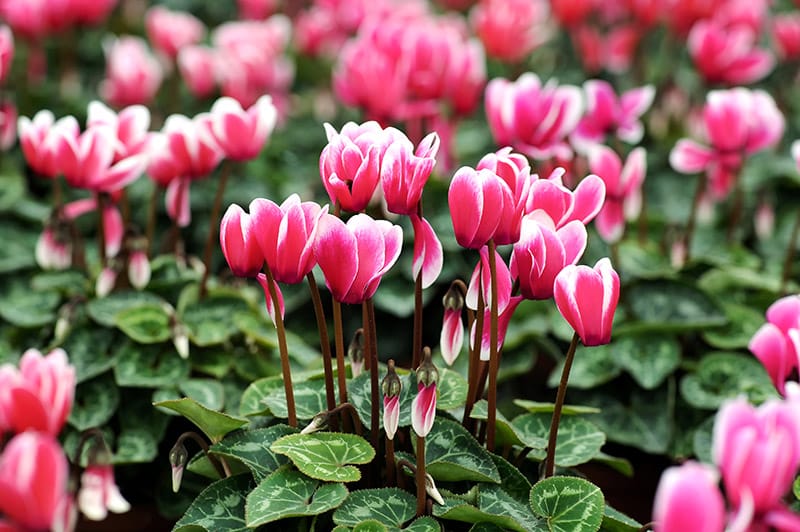
The cyclamen grows around the holidays and is typically bright pink, red, or white. Every part of the plant contains saponins, but the roots (tubers) have the highest concentration.
- Drooling
- Vomiting
- Diarrhea
- Abnormal heart rate
- Seizures
- Death
5. Christmas Rose
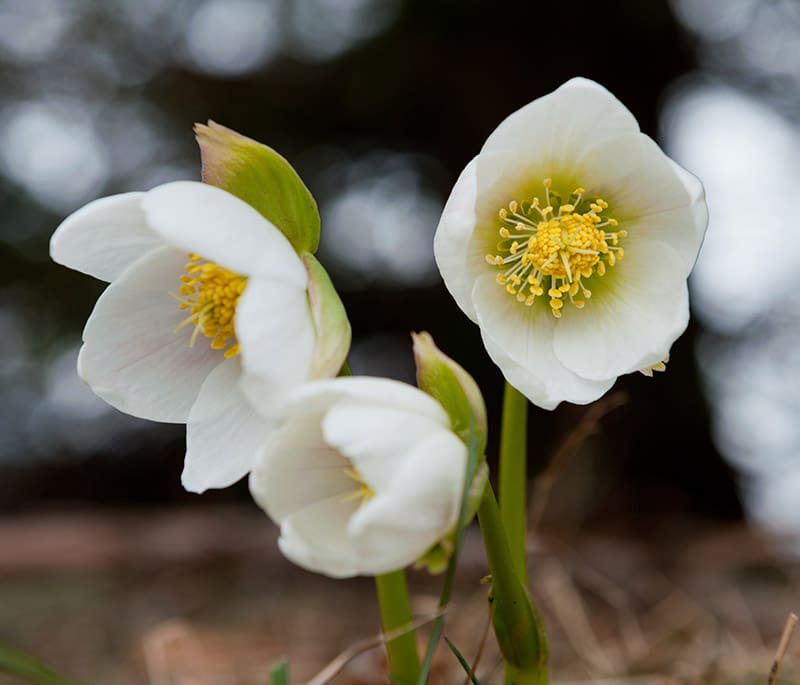
The Christmas rose contains toxic bufadienolides and glycosides, which cause:
- Electrolyte imbalances
- Changes in heart rate and rhythm
- Hallucinations
- Death
The sap in the Christmas rose can cause:
- Drooling
- Excessive vomiting
- Persistent diarrhea containing blood
6. Amaryllis
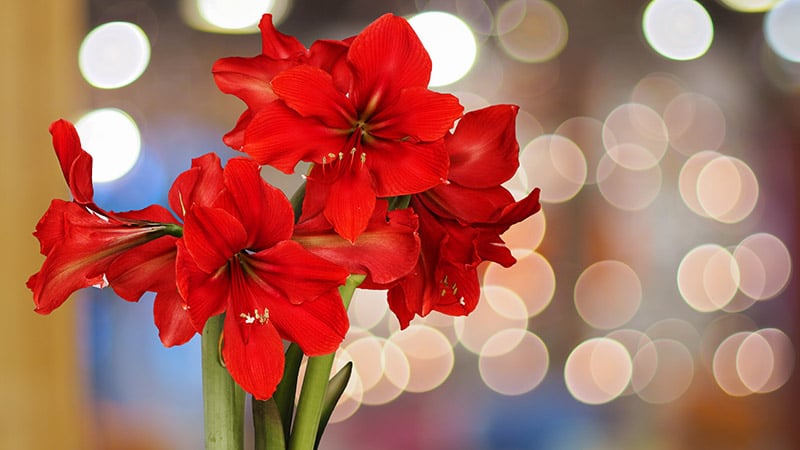
The Amaryllis is not a true lily but is still toxic. It contains alkaloids, which are found in all parts of the plant.
Eating a few leaves can cause mild gastrointestinal upset, like vomiting. However, if too many leaves or roots are ingested, it can lead to:
- Low blood pressure
- Weakness
- Tremors
- Seizures
3 Mildly Toxic Holiday Plants
7. Poinsettia
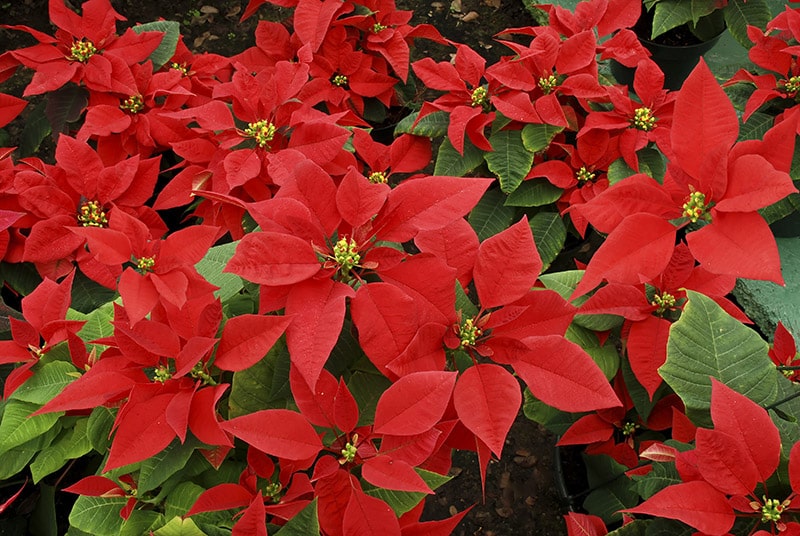
The poinsettia is the most well-known plant people associate with Christmas; unfortunately, it is not safe for cats. However, it’s only mildly toxic to felines. Poinsettias have a white sap containing saponin-like detergents and diterpenoid euphorbol esters.
When the sap is ingested, you might see the following signs:
- Drooling
- Vomiting
- Diarrhea (rarely)
Your cat would need to eat a large amount of the sap to come down with poinsettia poisoning. The sap can also cause irritation if exposed to the skin, along with:
- Redness
- Itchiness
- Swelling
Cats can have an irritated mouth and esophagus after eating a poinsettia. Poinsettias aren’t overly dangerous, but if your cat is prone to chewing on plants, put them out of your cat’s reach or avoid having them in the home altogether. They can still make your cat sick.
8. Christmas Tree
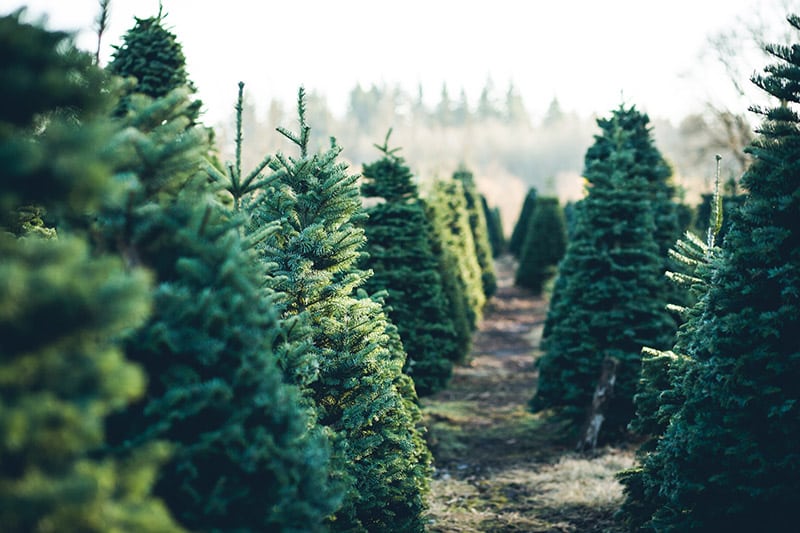
Most Christmas trees are fir, pine, and spruce, and while they aren’t necessarily toxic, the needles can injure a cat’s mouth when eaten. If your cat eats too many needles, it can cause gastrointestinal problems, including:
- Vomiting
- Diarrhea
- Drooling
- Abdominal pain
The tree water can also cause problems if your cat drinks it. Artificial trees have the same issue. If your cat eats the plastic “needles,” they will experience gastrointestinal issues. The decorations and electrical lights also pose a risk.
You can try cat-proofing your Christmas tree. The risks are minor, but you’ll also need to judge how your cat will act around it to decide if it’s worth it.
9. Christmas Cactus
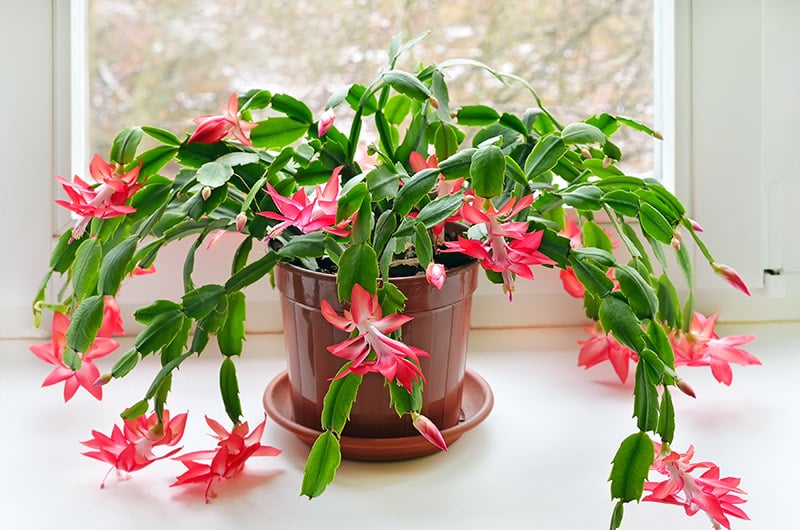
The Christmas cactus is not toxic, but it has tiny spines that can injure the mouth and irritate the stomach and intestines. It’s also highly fibrous, which can cause vomiting and diarrhea. This should all resolve within a few hours, but see your vet if the irritation persists.
Like the poinsettia, having a Christmas cactus in the house should be okay, but try to keep it out of your cat’s reach.
What You Should Do If Your Cat Ingested a Toxic Plant
If you know that your cat ate a toxic plant, you should take them to your vet or the closest emergency clinic. If you’re not entirely sure what kind of plant it is, bring it with you so your vet will know the source of the problem and, thus, how to treat it.
Mild nausea and vomiting that get better after a few hours aren’t signs of poisoning, but you should still call your vet to be on the safe side. If you’re unsure what to do, call the ASPCA Animal Poison Control at (888) 426-4435 or Pet Poison Helpline at (855) 764-7661. There is a charge for calling either.
Safe Plants for Cats
No plant is entirely safe, and if your cat eats too much of what is considered a harmless plant, they are still likely to get an upset stomach. However, the following plants are generally safe for felines, but we still recommend keeping them out of your cat’s reach, particularly if your kitty loves to chew on everything!
- Agave
- Crown of thorns
- Hoya
- Jade plant
- Living stone plant
- Money plant
- Sedum
- African violet
- Boston fern
- Bromeliad
- Geranium
- Hibiscus
- Orchids
- Peperomia
- Polka dot plant
- Prayer plant
- Rose
- Spider plant
- Swedish ivy

Conclusion
The holidays are full of fun and dangers for cats, which is especially true if you have a cat that eats everything. You can try giving them new toys and a scratching post, which might help distract them from the more dangerous items.
Avoid highly toxic plants at all costs! All it takes is a petal to fall to the floor from a lily, and you then have to rush your pet to the veterinarian. Cats are sneaky, and it isn’t difficult for a determined cat to reach what you think is an out-of-reach location. Keep the holidays safe for your kitty!
Read more on Catster:
- Could You Learn to Love a Cat With No Eyes?
- The Pros and Cons of My Cats as Health Care Providers
- Ask a Vet: Is Wet Food or Dry Food Better for Cats?
Featured Image Credit: Bogdan Sonjachnyj, Shutterstock

